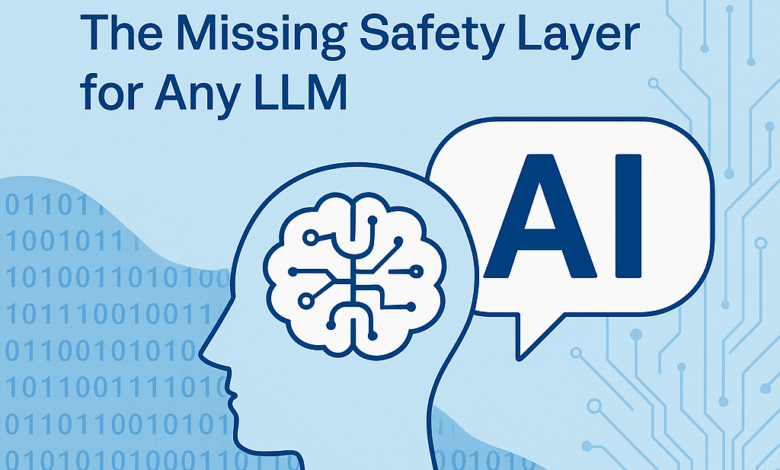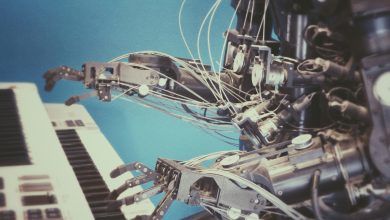
Anthropic’s CEO just admitted what many in the AI safety community have whispered for years: “We do not understand how our own AI creations work.”
This isn’t humility. It’s an alarm bell.
In a world where large language models can pass bar exams, summarize treaties, and generate clinical summaries — we still can’t explain why they say what they say. And when they hallucinate facts or emit copyright-violating content, as Anthropic’s own lawyers recently conceded in federal court, it’s not a bug — it’s the cost of not governing what we’ve built.
We’re not living in the golden age of alignment. We’re living in the denial phase of responsibility.
So I built OntoGuard AI. Not to decode neurons. But to demand accountability from outputs.
Mechanistic Interpretability Is a Mirror — Not a Brake
Mechanistic interpretability (MI) aims to reverse-engineer the innards of LLMs. It looks for patterns in neuron activations, searches for modular circuits, and tries to map knowledge to tensors.
This research is vital, but it’s fundamentally limited. The breakthroughs it delivers are typically:
- Local, not global — explaining one activation, not systemic reasoning.
- Post-hoc, not preventive — tracing a decision, not stopping a violation.
- Instructive, not enforceable — helping researchers understand, not helping compliance officers intervene.
And most importantly, it’s unscalable for deployment. No CTO will sit down and audit 175 billion parameters. No regulator wants to read neuron-level attribution maps.
MI is neuroscience for the machine age — fascinating, necessary, but not enough.
Enter OntoGuard: The Symbolic Conscience
OntoGuard AI doesn’t compete with MI. It completes it.
While MI introspects the model, OntoGuard surrounds it — enforcing symbolic rules, regulatory logic, and trust scoring in real-time.
| Mechanistic Interpretability | OntoGuard AI |
| Describes how the neuron fires | Filters whether the output should exist |
| Observes activations | Validates meaning against ontologies |
| Offers post-hoc explanation | Imposes real-time policy-aware constraints |
| No runtime enforcement | Wraps LLMs without retraining |
OntoGuard is what happens when compliance, not curiosity, drives the agenda.
In this framework, each LLM output is:
- Parsed into semantic components.
- Matched to an evolving ontology of legal, ethical, and factual constraints.
- Scored using an ensemble of Bayesian confidence and reinforcement-based trust models.
- Flagged if any component violates pre-established regulatory or enterprise-level rules.
This process is fast, scalable, and doesn’t require modifying the model. It’s the firewall your neural net doesn’t know it needs.
The Copyright Lawsuit Anthropic Never Wanted
In October 2023, music publishers sued Anthropic for copyright violations, alleging that Claude — Anthropic’s language model — had reproduced entire song lyrics without permission. This wasn’t a rogue developer incident. It was the natural consequence of an LLM trained on broad internet data with no symbolic filtering.
When Anthropic’s legal team responded, their admission was stark: yes, the model hallucinated; no, we didn’t mean for it to happen.
This incident is bigger than a legal oops. It’s a governance breakdown. It highlights what happens when output behavior isn’t constrained by enforceable symbolic policies.
Had OntoGuard AI been in place:
- The LLM’s output would have been parsed in real-time.
- OntoGuard’s symbolic layer would have recognized high-risk tokens matching copyrighted content.
- An output score would have dropped below a safety threshold.
- A compliance violation would have been logged and blocked before exposure.
This isn’t just hypothetical. This is already implemented and tested.
The Jennifer Aniston Neuron Fallacy
In one of MI’s most famous discoveries, researchers identified a neuron that activates whenever images or concepts related to Jennifer Aniston are shown.
Fascinating? Yes. Functional for governance? No.
Knowing a model has a Jennifer Aniston neuron doesn’t tell us:
- Whether it’s allowed to mention her under a given jurisdiction.
- Whether it should respond to a user prompt involving personal data.
- Whether that neuron firing just triggered a downstream hallucination about a fictional movie she never starred in.
The MI lens is simply too far from the legal lens.
OntoGuard shifts that lens from interpretability to enforceability.
Bridging the Trust Gap
As neural networks grow more powerful, the gap between what they can say and what they should say widens. The public sees impressive demos. Enterprises see risk.
OntoGuard bridges that gap by turning neural output into traceable, explainable, auditable decisions:
- Every generation is evaluated against a symbolic trust framework.
- Every violation is logged and categorized by ontology tag.
- Every compliance failure is traceable to the specific concept it violated.
And all of this happens in real time — no retraining, no downtime, no excuses.
Where This Goes
We’re entering an era where generative AI will draft contracts, write policies, and summarize medical histories. That’s not a future. That’s a now.
But no CEO, CIO, or regulator will allow black-box systems to operate in high-stakes domains without traceability.
That means:
- MI will help researchers understand their models.
- OntoGuard will help organizations trust their outputs.
The models will speak. But OntoGuard will decide if they’re allowed to.
We don’t need more neurons. We need more conscience.
And symbolic validation is how we build it.
About the Author:
Mark Starobinsky is the inventor of OntoGuard AI, a symbolic reasoning and compliance validation layer for LLMs. He previously led metadata and lineage strategy for Accenture North America and is featured in Marquis Who’s Who for his contributions to AI governance.




